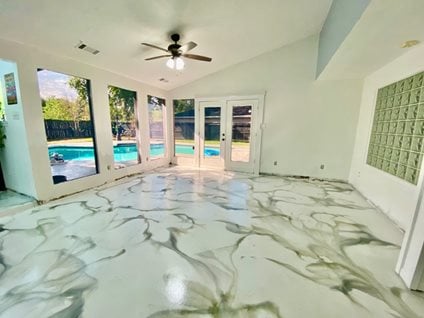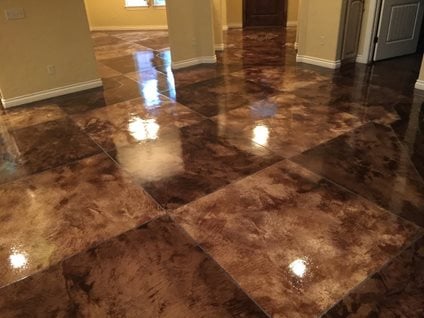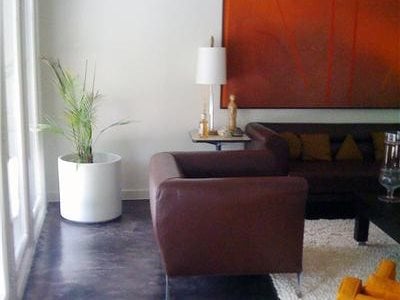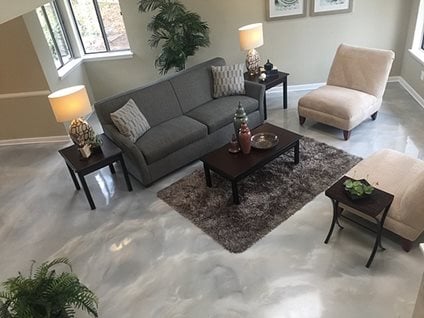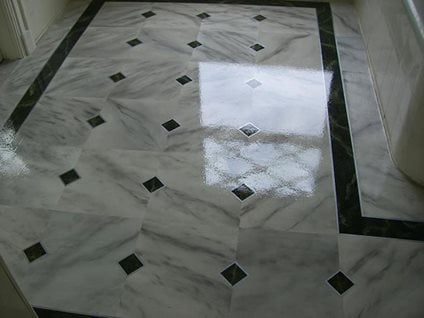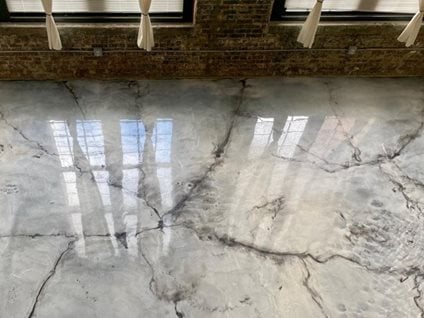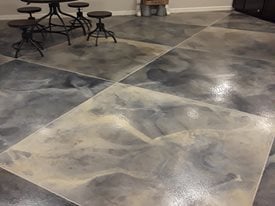
Tailored Living of Madison in Madison, WI.
Marble floors are oh-so-gorgeous…and oh-so-expensive! Getting that lustrous appearance and distinctive veining can set you back as much as $50 per square foot, depending on the marble tile size, thickness, and quality.
Concrete floors made to look like marble are a budget-friendly alternative that offer all the beauty of real marble at a fraction of the cost. What’s more, faux marble concrete floors offer a wider spectrum of pattern and color options.
Find contractors: Concrete flooring near me
There are a variety of ways to achieve the amazing transformation from concrete into marble, and most methods can be used on new and existing concrete floors as well as concrete overlays. Some are simple enough for a do-it-yourselfer to install while others require special equipment and techniques best left in the hands of a professional. Here’s a look at some of your options.
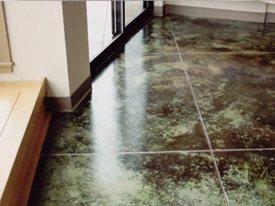
Fern green acid stain combined
with decorative scoring. Kent Magnell
Concrete Artisan in Santa Rosa, CA.
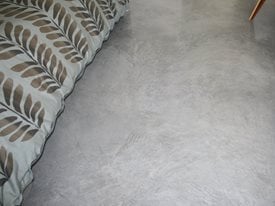
A burnished finish with natural-looking
highlights and lowlights.
Tom Ralston Concrete in Santa Cruz, CA.
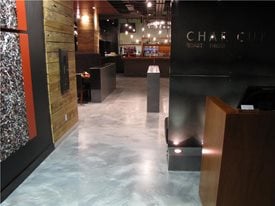
A metallic epoxy custom blended
from two different silver pigments gives
this restaurant floor a seamless, marble-like
finish.Concrete Inspirations in Calgary, AB.
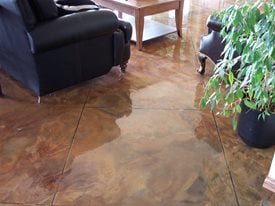
A concrete overlay scored and stained
to resemble the look ofpolished marble.
General Concrete Finishers in Moose Jaw, SK.
- Staining
Concrete acid stains are ideal for creating natural-looking marbling effects on bare concrete floors. They work by penetrating and reacting with the concrete surface to produce light and dark areas that simulate the color variations of real stone. For more distinct marbling effects, you can stain the entire floor with one color and spot stain over it with a diluted solution of the same or a different color.
You can also incorporate marble-like veins into your floor design by applying a clear sealer to the concrete prior to staining using an eyedropper or artist’s brush. The sealer acts as a resist and prevents the stain from penetrating the areas where it was applied. The cost of acid-stained concrete flooring starts at just $2 per square foot, significantly less than marble and other natural stone flooring options. But expect to pay more if you plan to use multiple stain colors and hand-applied methods.
Tip: To make sure you get the desired results, test the stain colors and application techniques you plan to use for your marbled concrete floor on an inconspicuous area of the slab. The color intensity can vary depending on the porosity of the concrete (see Acid Staining Basics). - Burnishing
Burnishing a newly placed concrete floor or concrete overlay can mimic the highlights and lowlights of marble by producing natural-looking color variations. It involves hand or machine troweling the surface over and over again in a swirling motion until the desired pattern and degree of color variation is achieved.
As a bonus, burnishing also gives the floor a smooth, marble-like sheen. This method can be used on plain, uncolored concrete to produce natural gray highlights and lowlights or in combination with color hardeners for a more mottled appearance. - Painting
Painting concrete floors to look like marble is similar to faux finishing of walls and offers more color options than concrete staining. The floor is first painted with the desired base color, and then one or more accent colors are applied by brush or sponge to create veining effects. Mixing the accent colors with an acrylic glaze will create greater translucency and allow the base color to show through.
Tip: When shopping around for concrete paint, be sure to choose a product specifically formulated for use on concrete. These paints are thicker and more durable than standard wall paints and will hold up better under foot traffic. Learn more about painting concrete floors. - Metallic epoxies
Metallic epoxy floor coatings are like liquid marble for concrete because of their pearlescent qualities and reflective pigments. They also are highly versatile, allowing you to achieve an endless array of decorative effects.
To create dramatic swirls of color, you can go over select areas of the floor with pool trowels attached to long wooden handles. You can also create marble-like color variations by randomly drizzling one or more metallic pigment colors over the top of a base color and then blending with a squeegee. Check out these projects to see examples of some of the unique effects possible. - DIY marble coatings
An alternative to painting is to apply an epoxy concrete floor coating specifically designed to give you a marble-like finish, such as Rustoleum’s RockSolid® Marble Floor Coating Kit. This kit includes two colors of epoxy coating and a two-part paint roller that’s used with a divided roller tray to apply the two colors simultaneously and create a marbling effect. Not only is application of the coating almost foolproof, the two-part colors mix right in their pouches so there is no need for measuring or mixing buckets. The downside is that your color options are generally limited to black, white, and gray tones, giving you less design versatility. - Decorative scoring
Using decorative scoring, you can add an extra touch of realism to your marbleized concrete floor by cutting it into tile patterns rather than leaving it seamless. Most marble floor tiles are square or rectangular and rarely larger than 24x24 inches in size. There are no such restrictions with concrete. You can grow or shrink your faux marble tile to fit the dimensions of the room and your desired pattern.
Scoring can be used along with most of the methods above and is especially effective if you want to establish different fields of color.
